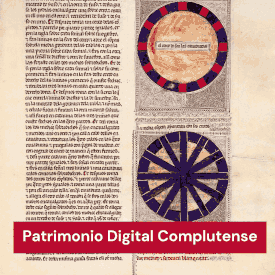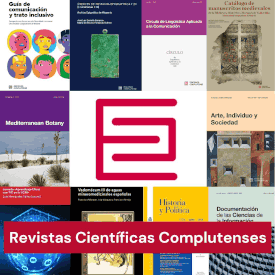Docta Complutense
Open Access Institutional Repository of the Complutense University of Madrid, that compiles scientific production to promote the visibility and impact of Complutense research.
With the collaboration of the Ministerio de Ciencia e Innovación and the Spanish Foundation for Science and Technology (FECYT).

Recent Submissions
Spatial multi-criteria analysis in environmental assessment: a review and reflection on benefits and limitations
(Journal of Environmental Assessment Policy and Management, 2018) González, Ainhoa; Enríquez de Salamanca Sánchez-Cámara, Álvaro
Anticipating and avoiding adverse environmental effects resulting from land-use changes and other anthropogenic interventions is the key objective of environmental assessment (EA). EA requires consideration of multiple environmental criteria to establish the receiving environment’s sensitivity and capacity to absorb change. With the increasing availability of and accessibility to spatial data, the adoption of spatial multi-criteria analysis, also known as GIS–MCA, has become a prominent technique to support EA. Using two diverging case studies, this paper reflects upon the advantages and disadvantages of applying GIS–MCA in EA reported in literature. While the significant contribution of this approach to increasing objectivity, transparency and accountability is corroborated, it is recognised that there is no one-fits-all solution. The widespread application of GIS–MCA calls for further research on the effects that methodological assumptions and data limitations may have at various planning hierarchies and decisions, and how these can be addressed to optimise the value of this technique in EA.
Tefluthrin: metabolism, food residues, toxicity, and mechanisms of action
(Critical Reviews in Toxicology, 2023) Wang, Xiaohui; Li, Houpeng; Wang, Simeng; Martínez Caballero, María Aranzazu; Martínez Caballero, Marta; Ares Lombán, Irma; Martínez Larrañaga, María Rosa; Wang, Xu; Anadón Navarro, Arturo Ramón; Maximiliano Guerra, Jorge Enrique
Tefluthrin is a Type I pyrethroid insecticide widely used all over the world. Residues of tefluthrin in various agricultural and animal-derived products may be related to potential human health risks. Tefluthrin metabolism in mammals involves hydrolysis of the ester bond to form cyclopropane acid and 4-methylbenzyl alcohol moieties, followed by oxidation. In this review manuscript, we provide crucial information regarding the toxicity of pyrethroids and propose natural antioxidants for amelioration poisoning in humans and animals. We call for the rational use of tefluthrin as an agrochemical product and for greater attention to the residual toxicity caused by tefluthrin in primary and succeeding crops. This greater attention is required given the global use of tefluthrin.













